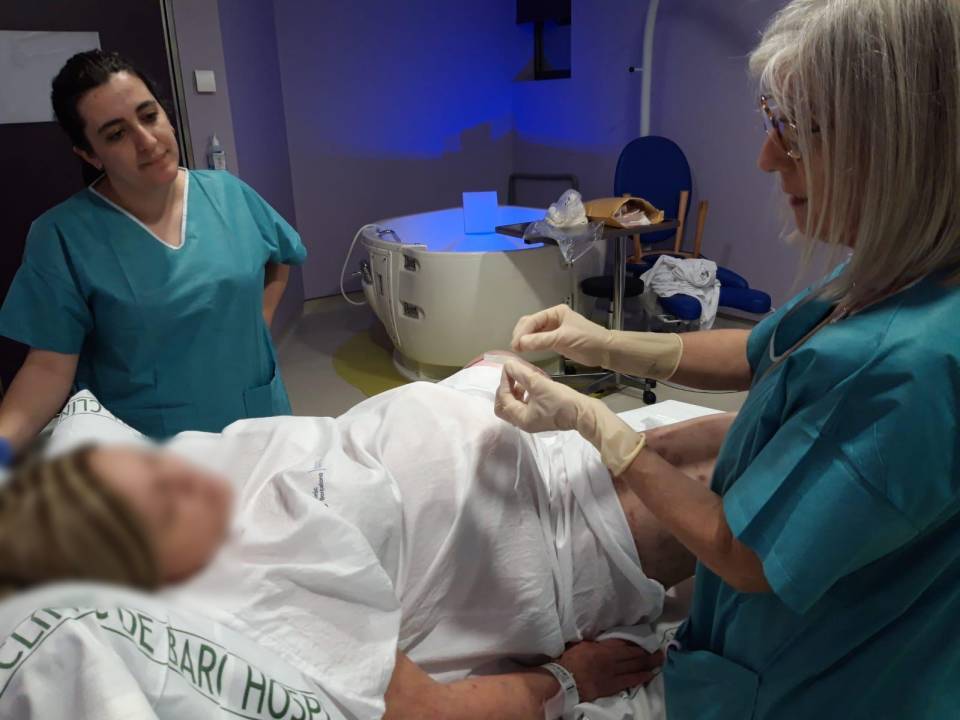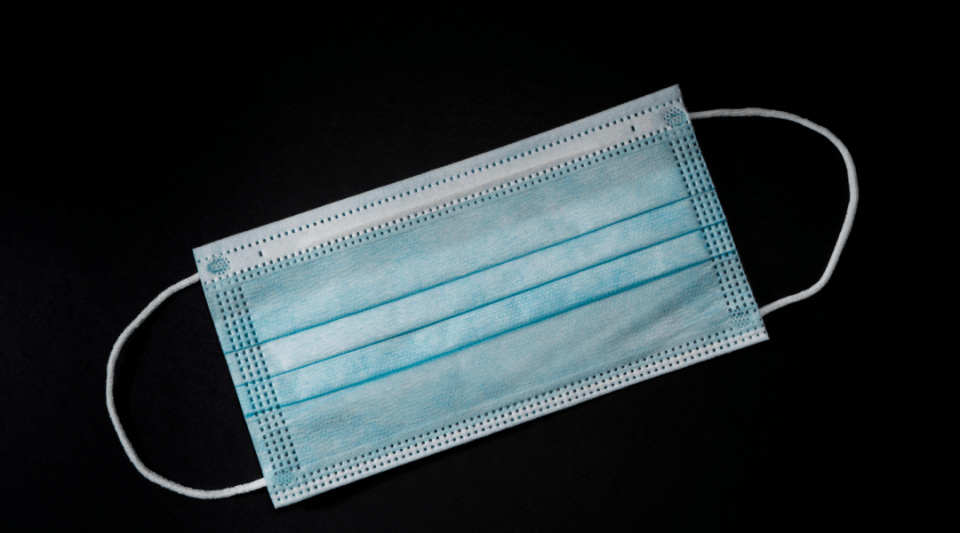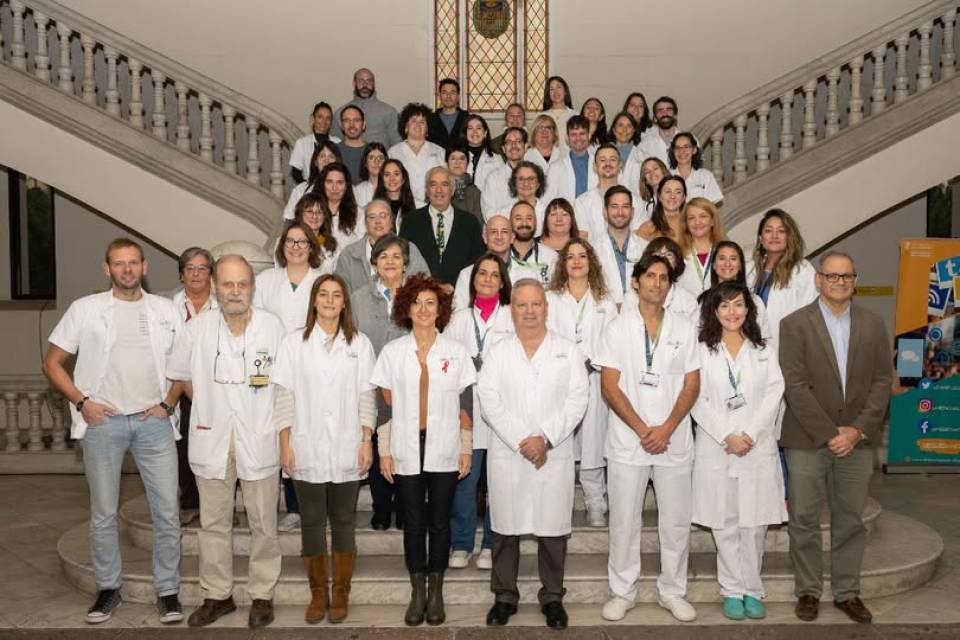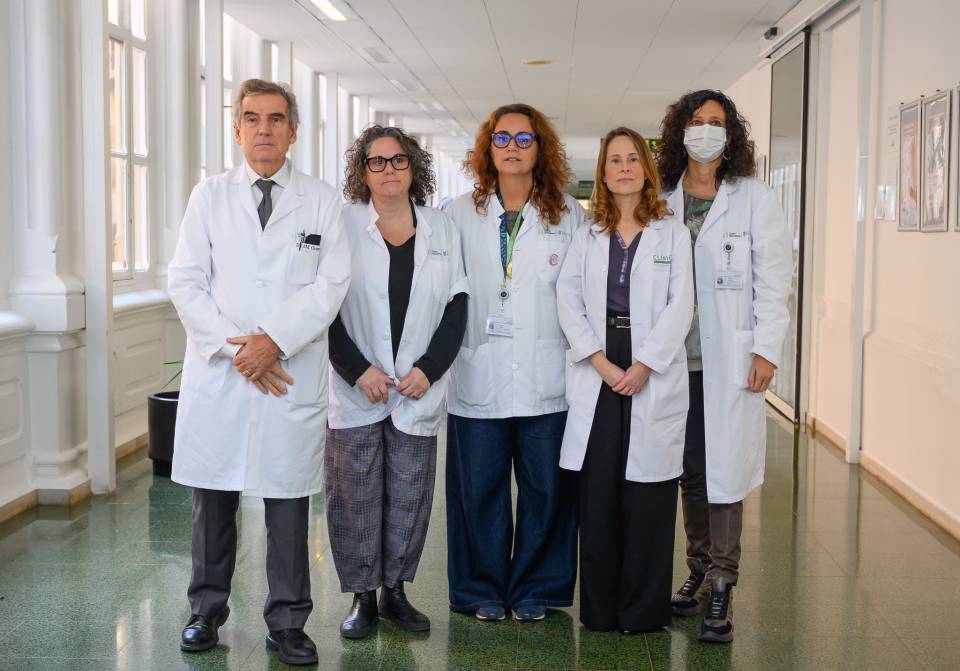In March, for the first time, the Hospital Clínic Barcelona’s Maternitat Centre attended the delivery of a patient with inherited epidermolysis bullosa, a task coordinated by the Maternal-Fetal Medicine and Dermatology Services.
It is a genetic, rare and chronic skin disease characterized by the fragility of the skin, which is why it is known as butterfly skin disorder. “What happens is that patients with butterfly skin can develop blisters and wounds after even the most minor trauma. Since they lack a protein in the skin, they also have problems with the healing of wounds”, explains Dr. Josep Riera, dermatology specialist at the Hospital Clínic Barcelona and the head of genetic skin diseases.
The fragility of these patients’ skin is caused by defects in the proteins that make up the skin. “If we draw a comparison between the skin and a Velcro strip, depending on the protein that fails, the Velcro strips or the tiny hairs can be altered. In other words, the different layers of skin separate easily, and this has a great impact on patients with this disorder”, explains Dr. Riera.
Dr. Riera is the dermatologist treating the 21-year-old patient who gave birth to her first child last March. The birth was extraordinary because the disease is very rare—it is a minority disease—as is the type the patient has: junctional epidermolysis bullosa. In this case, the blisters appear on the basement membrane, situated between the external layer of skin (epidermis) and the inner layer (dermis). Worldwide, this inherited epidermolysis bullosa group is the least prevalent. The wounds usually appear more on the extremities, or the upper part of the hands, feet and ankles. The oral mucosa and the eyes can also be affected, and alopecia, anaemia and loss of tooth enamel are also common.
In order to treat the patient as safely as possible, the team in the Delivery Room at the Maternitat Centre received prior training, and the material normally used was adapted in order to try to minimize any damage to the patient’s skin during labour and the hospital admission. Nagore García, midwife at the Clínic, who attended the delivery, assures us that the whole team was “very well prepared for any possible complication, and to be able to deal with it in the most appropriate way. It ended up being a vaginal birth, a eutocic delivery, and without any complications. The baby adjusted well in the first few hours after birth, and showed no signs of having the disease”.
Apart from the preparation of the whole delivery room team, during the birth there were two nursing professionals from the DEBRA association, an organization that supports patients with butterfly skin disease and their families. “We took care of all the obstetric side and they focused on the patient’s lesions. If any treatment had been required, they would have carried it out. They also told us how to prevent the lesions and adapt the environment to this situation. They made us feel very confident”, explains Nagore.
The monitoring of the pregnancy was a real challenge, according to Dr. Núria Baños, specialist in the Clínic’s Maternal-Fetal Medicine Service, who carried out the controls during the patient’s pregnancy. “It was the first pregnancy we had had in a patient with this disease here at the Clínic. We knew that it was potentially serious, and we had to live with the uncertainty of how it would go, and which complications might arise", she explains. Coordination with the dermatology team was essential, and both Dr. Riera and Dr. Baños attended the birth, in case of any possible complications and to reassure the patient.
“Currently, there is no cure for this disease, so what we do is focus on the preventative and symptomatic treatment of any wounds or complications”, explains Dr. Riera. He assures us that, from an early age, these patients learn to take care of themselves, with the support of their families, and to apply the most suitable dressings. Therefore, “they are expert patients, and no one knows them better than they do”.




